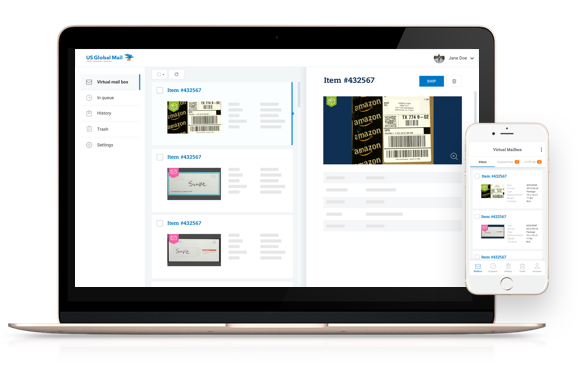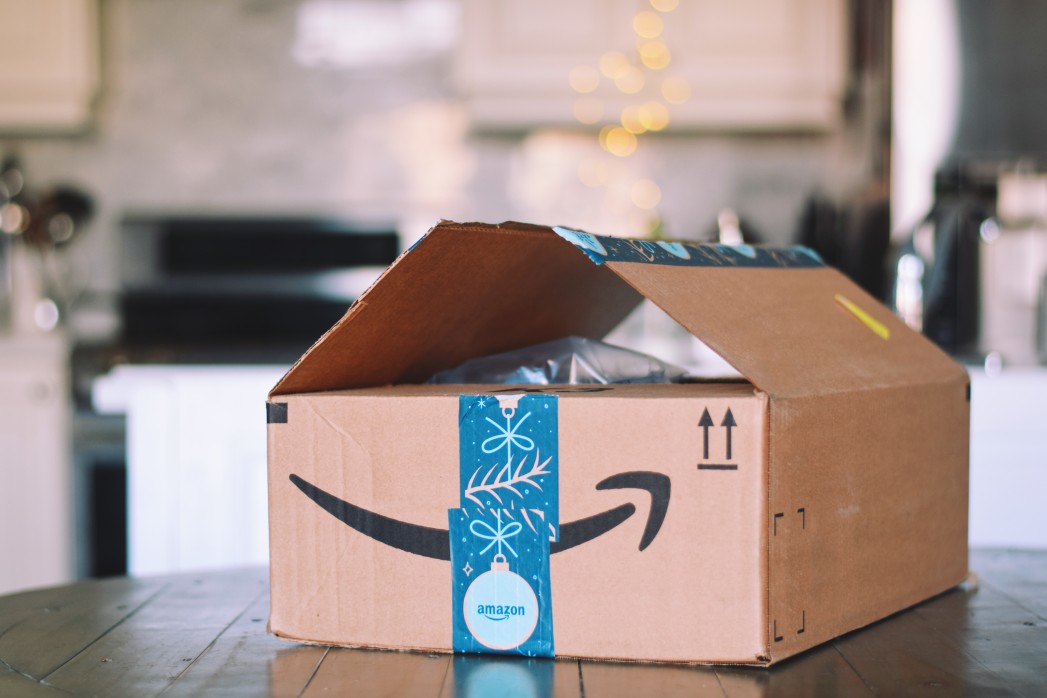Have you recently received a mystery package from Amazon with no idea who purchased it or how you can determine where it came from? This kind of mail can be frustrating, because you cannot thank the gift-giver. It may, in some cases, have more sinister meanings, as anonymous deliveries have occasionally been linked with fraudulent activity.
It is often impossible to tell where an Amazon package came from, as Amazon protects the anonymity of buyers. In some cases, the return address will give you a clue, and in others, the tracking number may help you to determine where the package was mailed from. In many circumstances, however, you will not be able to tell at all.

How Can I Tell Where An Amazon Package Came From?
Many people want to find out who has sent a package when it turns up anonymously, if only so they can thank the sender. However, this is often not easy, and you will frequently have no avenue that tells you who sent it.
That leaves you with only one option: asking your friends and family whether they purchased the item for you, and thanking whoever says they did. This can be awkward, however, so let’s look at the steps you can take before this that may help you to determine who sent an Amazon package.
Method One: Check The Return Address
The first thing to do is to check whether the package has a return address. This may be the sender’s address, but it might also be Amazon’s address or the address of a drop-shipper, so this may not tell you anything.
However, if you recognize the address, you may be able to identify the sender from this. If not, move on to the next method.
Method Two: Check The Packing Slip
If someone has bought you a gift, they have the option to fill out their information on the packing slip so that you know who they are. The packing slip is usually tucked inside the package, and will contain things like the name and address of the sender if they have filled this in.
However, Amazon will not require the sender to fill this in; it is perfectly possible for them to purchase a gift for you anonymously, so this may not give you any information.
The packing slip should also tell you whether the item was fulfilled by Amazon (FBA) or by a third party seller. If it was a third party seller, you would probably need to contact that seller, which isn’t easy to do. If it was Amazon, try speaking to their customer service team (see Method Four below).
Method Three: Enter The Tracking Information Online
You might think that the tracking information is of no use to you once the package is in your hands. Tracking information is designed to tell you where the package has reached in its journey, so how can this help if you are already holding the package?
The tracking information will sometimes contain information about where your package has been throughout its journey. For example, it will often show what city/state and country it is in at each sorting hub it reaches.
This could give you some clues about who has sent the package, although there is no guarantee. For example, if you see that the item came from Amazon UK, it was likely purchased for you by a friend or relative in the UK.
This will not always give you enough information to identify the buyer, but it is worth looking at, because it may offer some hints. In many cases, however, it will simply have been shipped from an Amazon warehouse, and this may not relate to your buyer’s address at all.
Method Four: Contact Amazon Customer Services
If none of the other methods have given you any information, try contacting Amazon’s customer service team. However, before you start, it is important to be aware that Amazon protects its customer information with care, and you may not be given a name.
Amazon is very cautious about handing out personal information, and just receiving a package does not entitle you to know who sent it. This would be considered sensitive data, because it provides information about the person’s buying trends, and if the buyer has chosen to remain anonymous, they may not appreciate this.
However, it is worth trying. You may wish to explain the situation to Amazon, or you can tell them that you are concerned about being involved in fraud (especially if the item doesn’t seem like something your friends would choose for you).
In some cases, Amazon may then confirm the first name of the person who made the order. However, there is no guarantee that the company will do this, and in many cases, they will refuse. If this happens, there is likely nothing else that you can do to trace who sent an Amazon package, besides talking to friends and family. You cannot force Amazon to give you this information.

Should I Ever Be Concerned About An Anonymous Package?
Most people are excited when they receive something that they were not expecting, but if you have just got a package that was unexpected and has no apparent connection to you, with no note about who sent it, you may be a little worried.
In most cases, this will be because a package has been misdelivered, but if the name and address match yours, this is less likely. In general, you don’t need to worry about this, but in some cases, anonymous deliveries of random products are attempts at fraud, so this should raise red flags for you.
How Do Anonymous Packages Link To Fraud?
Sending out anonymous packages is sometimes called “brushing,” and it is an attempt by sellers to raise their ratings on Amazon. Essentially, they get a third party to purchase their item and send it to a real address.
The product gets delivered to the address, and the third party, who bought it, can then leave a review of the product. They can even leave a “verified purchase review,” which will push their review up in Amazon’s review algorithm, artificially inflating the reviews of the product.
This may sound like a lot of work to go to for the sake of improving reviews, but Amazon reviews carry an enormous amount of weight, and this tactic certainly gets used by some. The more reviews a product has and the better these reviews are, the higher the product will appear in the search results.
This can make a massive difference to how well the product sells, so don’t underestimate the value of good reviews to sellers. Some will certainly try to cheat the system if they see an opportunity, and an anonymous package – particularly of a seemingly random item – is often a sign that you are being used for this.
Should I Be Concerned If I Am Being Targeted For “Brushing”?
It might seem like this is a victimless crime; the recipient gets items that they can keep, sell, or donate, and the seller gets improved ratings. However, this is not good for consumers as a whole, who need to be able to trust product reviews, and it also means that your information has been compromised.
The scammer will have got your name and address from somewhere, and you should be concerned about this. You will need to check that other private information has remained secure, and contact Amazon to check whether your account’s privacy has been compromised.
Amazon has a help page specifically related to brushing, and you can also contact the customer services team for assistance. You are legally allowed to keep the item, but Amazon recommends returning it unopened and reporting the scam to their customer services team and to the Federal Trade Commission.
You should also keep an eye on your credit card statements and consider changing your account passwords. If someone tries to bill you for the item you received, refuse; you do not owe them money for an item you didn’t order.

Can You Deliberately Send Anonymous Packages On Amazon?
Yes, senders can dispatch a package anonymously by requesting that a packaging slip is not included within the package. This does cause confusion for the recipient, and Amazon claims to get many calls regarding anonymous packages around the holidays.
Some people worry they have been incorrectly charged for the item, while others are concerned about fraud. Often, the answer is simply that someone purchased the item for them, and there is nothing to worry about.
It might seem like a nice idea to send a package anonymously and surprise someone around the holidays, but this can cause stress to the recipient, and it’s generally better to leave your information visible if you are purchasing something for a friend.
Although anonymous gifts may seem innocent, the potential for fraud and confusion surrounding them is high, and you may unwittingly upset the person you are sending the gift to. To avoid this, leave the invoice visible.
It should also be noted that although you can request anonymity by having the packing slip removed, the seller/Amazon will not always comply, and there is no guarantee that the item will arrive without any identifying information.
You shouldn’t try to use this anonymity to send gag gifts or hurtful gifts, because you may find that you aren’t as anonymous as you expected to be.
Can You Keep A Gift Secret On A Shared Amazon Account?
If you are buying something for the person you share the account with, you can keep the gift a secret in a few different ways. One option is to set up Households, which gives individual profiles to household members so that everyone can select their own profile and shop and receive notifications privately.
You can also archive orders. To do this, click on “Orders” and find the item that you wish to hide. You should see a link below it that says “Archive Order,” and if you click on this, it will disappear from the list of orders.
You can still find these under your “Archived Orders” button (in “Your Account”), but they won’t appear in the main order list. This is a quick way to hide something you have bought from someone you share the account with.
Should I Be Worried If I Can’t Tell Where An Amazon Package Came from?
In general, an anonymous package will be from a friend or relative who forgot to include their information or thought it would be fun to stay anonymous. If the item is something that seems “you,” this is very likely to be the case.
You should only be worried if you receive random anonymous orders at all times of the year, unrelated to birthdays/Christmas, and none of your social circle claims responsibility. If the items aren’t on a wish list and seem totally unrelated to your preferences, this could be cause for concern.
Contact Amazon if this happens, especially if it occurs repeatedly or you have other reasons to think your information has been compromised. They should be able to help you deal with the problem.

Conclusion
Receiving an Amazon package is often a great, exciting moment, but only if you are at home when it arrives. If you realize a package is coming and you are going to be out, it often turns into a source of stress and frustration, especially if it needs a signature or it’s too big for your mailbox.
If this happens to you, you may find that a Virtual Mailbox from US Global Mail is the answer. This provides you with a secure address where packages can be delivered at any time, ensuring that you can get mail whether you are home or not.
The package will remain in secure storage until it suits you to collect it, and you can even view previews of it on the app. This is also a great way to avoid your significant other spotting or signing for a package that is intended to be a surprise!







